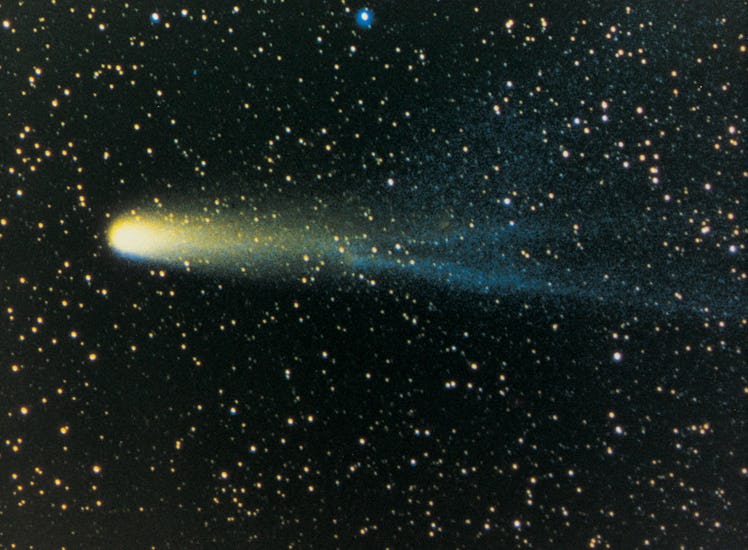Particles From Halley's Comet Will Shoot Through The Sky This September
The Orionid meteor shower is set to hit the sky at the end of the month, and will shine through November, thanks to Halley's Comet.

Anyone who loves sky shows is going to want to make sure to set aside some time and mark off their calendar. Particles from Halley’s Comet are set to shoot through the sky between September and November — and peaking in October, as part of the Orionid meteor shower. Here’s everything you need to know about what that shower is — and when the best time will be to see it.
What are the Orionid meteors?
According to EarthSky.org, the Orionid meteors that shoot through the sky in the fall are courtesy of Halley’s Comet. “This comet orbits the sun every 76 years or so, and like steam coming from a locomotive, dust particles are expelled from the comet’s nucleus and are left behind in its path,” the site explains.
That’s what makes this meteor shower an exciting one for astronomers and people who love thinking about the world outside our orbit. The shooting meteors we see are bits and pieces of the comet shooting through our skyline.
When will the Orionid meteor happen?
According to the American Meteor Society, in a typical year the Orionids produce 10-20 shower members per hour, but some years the show is more spectacular. We can probably expect this year we will see closer to the 10-20 per comets per hour at the shower’s peak.
The Orionids will be visible between September 26 to November 22, but October 20th and 21st is when we’ll see the shower at its best.
How can I watch the Orionid meteor shower?
TimeandDate.com notes that you don’t need “any special equipment or a lot of skills to view a meteor shower.” But you are going to get the best show if you can find a spot away from city lights or a bright Moon, after the sun has set.
TimeandDate.com also has a data table you can check to see what the best time to catch the meteor shower will be where you live.
“Once you have found your viewing spot, lie down on the ground and look at the sky,” the site explains. The site can also let you know which direction is best to look toward to give viewers the best show, which will be different depending on where you live.
You should expect to see 10 to 20 meteors her hour, which will look like fast moving bright stars in the sky. “The Orionids sometimes produce bright fireballs,” TimeandDate.com explains, which is always exciting to see shoot across the skyline.
The next meteor shower we’ll see are the Southern Taurids, which will peak in November.